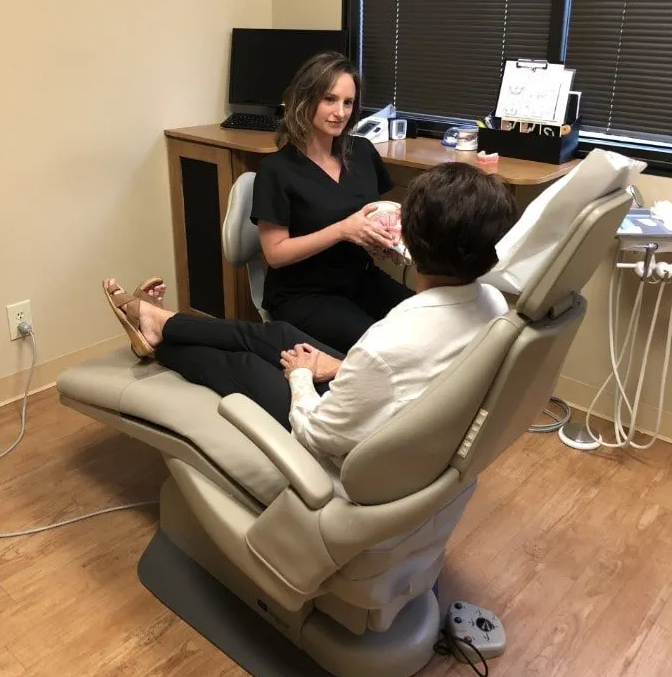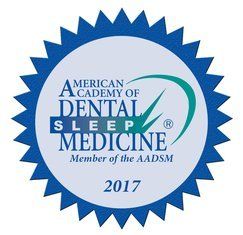TMJ Treatment In The Woodlands, TX

When it comes to finding the best TMJ disorder treatment in The Woodlands or greater Houston, Texas area, many temporomandibular joint disorder (TMD) sufferers find that relieving jaw pain starts with home remedies such as using an ice pack, taking over the counter pain relievers, or massaging the joint.
But when TMJ pain relief isn’t something you’re able to achieve on your own, seeking professional TMD treatment is the next step to take. What most people don’t realize though, is that a TMD specialist can help treat their condition faster and more effectively than with DIY pain treatment.
With specialist care and a proper diagnosis, our TMD patients can be confident knowing they’re receiving the most effective care plan and pain treatment for their TMJ disorder. In most cases, they wish they had seen a TMJ dentist even sooner.
When the need comes for specialist care, you want to be sure you see a Dr. that specializes in treating TMJ that has the necessary experience and qualifications. As a Master of Science in Orofacial Pain, Dr. Phillips makes sure each patient she sees for TMD receives an individualized plan that focuses on alignment and healthy function of their jaws and bite. By taking a holistic approach toward managing the causes of their pain or other symptoms, she can provide results that are both fast and effective.

How We Treat TMJ Disorder - Dental Splint Therapy
What Sets Our Treatments Apart?
- Dr. Phillips holds a Master’s degree in orofacial pain treatment and is a patient-focused TMD specialist with over 11 years of experience. At Restore TMJ and Sleep Therapy, we always put patients first and all of our treatments are proven and research-based.
- Dr. Phillips does not practice general dentistry. She focuses her treatments exclusively on TMDs and obstructive sleep apnea. This focus has allowed her to acquire the specialized knowledge, skills, and experience that make her the go-to referral source for over 300 Physicians and Dentists in the Houston area.
- The use of splint therapy is an effective, proven, research-based alternative to other more invasive treatments.
Happy Patients
"Made me feel like they truly cared about my well being"
I can highly recommend Dr Phillips and her wonderful staff. They made the office visit so pleasant and made me feel like they truly cared about my well being. The service they provide is so specialized and we are so lucky to have them near my neighborhood. TMJ has been my issue for many years and thanks to Dr Prehn and now Dr Phillips and this great staff, it has become a very manageable issue. Again, I would highly recommend them...it can be a life changing solution.
- Reba Brantley Strickland
"It has been years since I haven't experienced having a morning headache."
“Dr. Phillips and the whole team took excellent care of me -- from setting appointments and follow-ups, diagnosis and treatment. I was treated with compassion and courtesy. Dr. Phillips and her staff spent a great deal of time with me to understand my history and symptoms, perform a comprehensive exam and imaging, and provide a detailed diagnosis and treatment plan. And it worked! The first night I slept with my appliance the next morning I did not have a headache. It has been years since I haven't experienced having a morning headache. Totally worthwhile doctors visit. Terrific experience. Highly recommend.”
- Lydia Hall
What You Can do to Relieve TMJ Pain at Home
- Take over the counter anti-inflammatory pain relief medication to relieve muscle soreness and headaches.
- Avoid eating hard or crunchy foods during flare-ups.
- Massage the TMJ and surrounding muscles.
- Alternate a cold and moist heat compress to alleviate joint pain.
- Practice resting with your lips together and teeth apart, where the TMJ is not fully engaged.
Answering Your Treatment Related FAQs
-
What is the best treatment for tmj disorder?
The best treatment will depend upon your specific temporomandibular joint disorder. However, dental splints are one of the most effective, versatile, and proven treatments. Owing to this, dental splints are often the go-to choice.
-
How long does it take for a tmj disorder to go away?
Left untreated, a TMD may never go away and could instead progressively worsen. With an experienced tmj specialist and proper treatment, pain relief could begin immediately with significant resolution of symptoms in about 3 months for most cases. Complete healing time, however, depends on your specific condition and the underlying causes of the symptoms.
-
What will happen if TMD is not treated?
TMD is a chronic condition. Often, the symptoms will progressively worsen until the pain becomes unbearable. More severe TMDs may require more complicated and intensive treatment.
-
Can a TMJ disorder go away on its own?
Very rarely. TMDs often get worse if left untreated. Damage to the jaw or muscles attached to your TMJ could be exacerbated and could cause more serious complications and result in more intense pain.
-
Will I have to have TMJ surgery?
Conservative, mainstream treatment for TMD does not include surgery as a first line of treatment. Surgery is the very last treatment to consider. Non-surgical treatment options for this condition are consistent with other orthopedic or rheumatologic conditions, such as a painful knee or shoulder. The goals of management are to decrease pain, loading of the joint and to restore function of the joint (40mm opening between front teeth without pain) and normal activity for the patient.
-
My jaw locks occasionally, usually in the morning, but I can work it open. Is this normal?
No! Even an occasional lock is cause for concern. Joints are designed to move. A joint that locks up, even occasionally, is a joint under stress, unstable and not being lubricated properly. Episodic locking is very difficult to treat and should be treated as soon as possible. You could run the risk of being permanently locked, which would diminish your treatment options. Please see your dentist as soon as possible if you have this condition.
-
I already have a splint that does not work. What more can be done?
The splint only addresses one contributing factor of your headaches or pain. There may be others that need to be identified. Once they are identified, they can be treated. However, during the treatment of these other factors, it is critical that a good working splint is in place, because as these other factors resolve themselves, the facial muscles will be affected, and the splint needs to be changed in order to respond to these changes.
-
What is the key to the long-term health of the TMJ?
Painless mobility of the jaw is the key. It is the lubrication in the joint (synovial fluid) that keeps the joint healthy. Every time the jaw opens, it lubricates itself, giving nutrition to the bone and soft tissues of the joint. The jaw must open to at least 40 mm (distance between the front teeth) in order to stay healthy. Less opening than that can lead to arthritis and other internal derangements of the TM joint. This opening measurement of 40mm would be the goal of any surgical or non-surgical TM joint therapy.
Contact Us For a TMJ Treatment Consultation
Are you experiencing chronic jaw pain, headaches, or broken teeth? You may have undiagnosed TMJ disorder. Contact our practice in The Woodlands to schedule a consultation to learn more about how we can help. With a board certification in orofacial pain and experience treating thousands of TMJ disorder sufferers, Dr. Phillips is one of the most experienced TMJ disorder specialists in the greater Houston area.
Contact Us
Thank you for reaching out to us at REstore TMJ and Sleep Therapy. We look forward to helping you. We will follow up within 24 hours for contact requests received during normal office hours Monday – Thursday. If you have submitted a request later in the day on Thursday – Sunday, we will follow up on Monday. If you would like to talk to us before we can get to your request, please feel free to give us a call at 281-296-6797 Monday – Thursday 8am – 4:30pm. Have a great day!
Regards,
Dr. Katherine Phillips and Staff
Please try again later.
REstore TMJ & Sleep Therapy P.A.
1001 Medical Plaza Drive,
Suite 200 | The Woodlands, TX 77380
281-296-6797
Dr. Phillips serves TMJ & Sleep patients in: The Woodlands TX | Spring TX | Conroe TX Tomball TX | Cypress, TX | Houston, TX | Kingwood TX | Humble, TX | Katy TX
© 2023 by REstore TMJ & Sleep Therapy | Terms Of Service & Privacy Policy | XML Sitemap
-2700x842-1920w.png)






